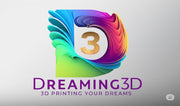
The world of technology is continually evolving, and one of the most exciting advancements in recent years is 3D printing. Originally developed for rapid prototyping, this technology has now found its way into various industries, with the housing market being one of the most promising frontiers. In this blog, we will explore the impact of 3D printing on the housing market and how it is reshaping the way we think about construction.
- Affordable Housing Solutions
One of the most significant advantages of 3D printing in the housing sector is its potential to provide affordable housing solutions. Traditional construction methods can be time-consuming and expensive, often leading to a shortage of affordable homes. 3D printing offers a faster and more cost-effective alternative.
By using 3D printers to construct homes, builders can significantly reduce labor costs and waste materials. The technology allows for precise layering of materials, minimizing the amount of raw materials needed. This efficiency translates into more affordable housing options, addressing the global challenge of housing accessibility.
- Rapid Construction Speed
Speed is another game-changing aspect of 3D printing in the housing market. Traditional construction projects can take months or even years to complete, leading to delays and increased costs. 3D printing technology, on the other hand, enables the rapid construction of buildings.
The layer-by-layer additive manufacturing process of 3D printing allows for quicker project completion. Entire houses can be printed in a matter of days or weeks, accelerating the pace of construction projects. This is particularly beneficial in addressing housing crises, disaster relief efforts, or urgent infrastructure needs.
- Customization and Architectural Innovation
Beyond cost and speed, 3D printing opens the door to unprecedented levels of customization and architectural innovation. Traditional construction methods often involve standardized designs due to the limitations of manual labor and the associated costs. 3D printing allows for intricate and personalized designs that were once impractical or economically unfeasible.
Architects and designers can now push the boundaries of creativity, creating unique and aesthetically pleasing structures that cater to individual preferences. This level of customization not only enhances the overall quality of living but also contributes to the diversification of architectural styles in the housing market.
Challenges and Considerations
While 3D printing holds immense potential, it is essential to consider the challenges and limitations associated with this technology in the housing sector. Regulatory frameworks, material quality, and the scalability of 3D printing technology are some factors that need careful consideration. Additionally, addressing concerns related to the durability and long-term performance of 3D-printed structures is crucial for widespread adoption.
Conclusion
As 3D printing technology continues to advance, its impact on the housing market is becoming increasingly evident. The potential for affordable housing, rapid construction, and architectural innovation positions 3D printing as a transformative force in the construction industry. While challenges exist, ongoing research and development are likely to address these issues, paving the way for a future where 3D-printed homes are a common sight, reshaping the landscape of the housing market for the better.
